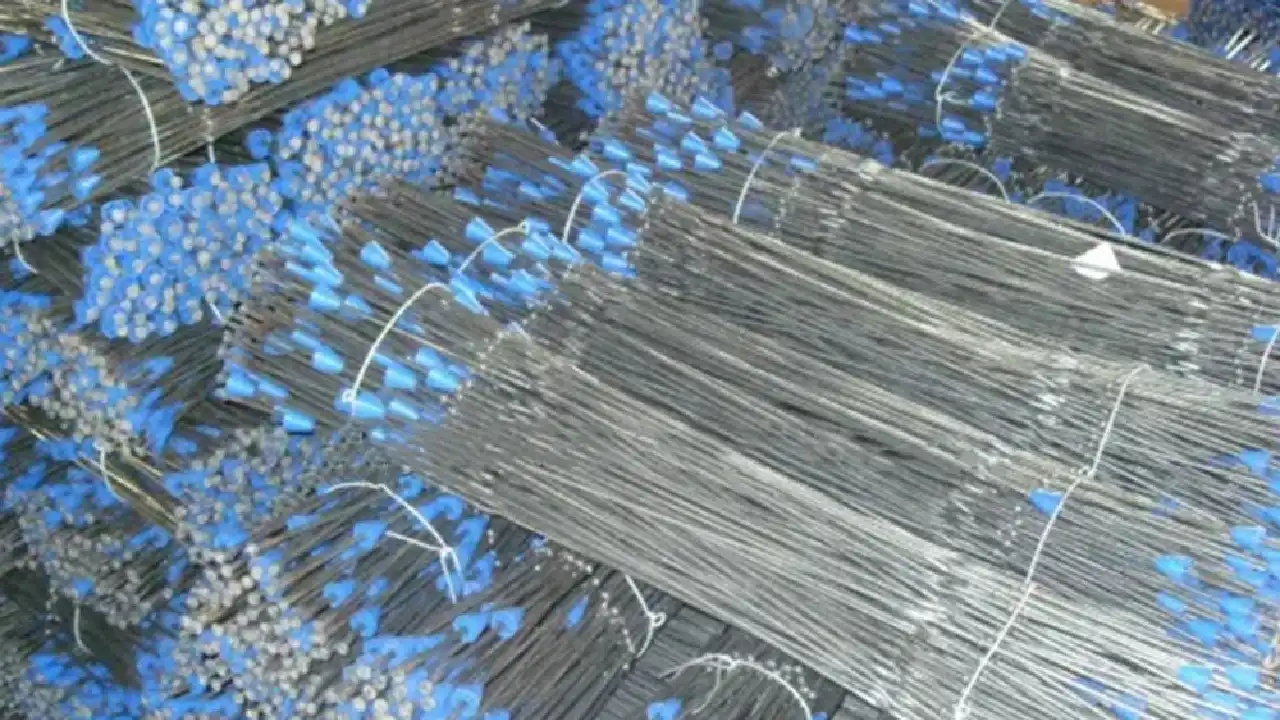NEWS
Steel Stakes for Concrete Forming: A Comprehensive Guide

Steel stakes play a crucial role in concrete forming, acting as a support system to keep the formwork steady and strong. When concrete is poured, it’s incredibly heavy, and wet concrete needs stable support to ensure the structure comes out correctly. That’s where steel stakes come in. They hold the formwork securely in place, preventing it from shifting or collapsing under the weight of the wet concrete. There are various types of steel stakes used in construction, each serving a specific purpose, and in this guide, we will explore the importance of these stakes, their types, and how they work together with snap tie to create a strong, stable form.
What Are Steel Stakes?
Steel stakes are heavy-duty rods made from steel, typically pointed at one end to make it easier to drive them into the ground. Their primary function is to stabilize formwork, which is the temporary mold that holds the concrete until it hardens and can support itself. Formwork can consist of wood, metal, or other materials, and steel stakes are driven into the ground at regular intervals along the form to keep it upright and steady. The stakes are designed to handle the substantial pressure created by the wet concrete and prevent any movement or shifting that could ruin the structure.
In addition to supporting formwork, steel stakes can also help ensure the accuracy of the concrete pour. By keeping the forms in the correct position, they allow the concrete to be poured precisely where it needs to go, reducing the risk of errors and ensuring that the final structure is level and properly shaped. They are essential in projects ranging from small residential jobs to large commercial construction, where precision and stability are key.
When it comes to concrete forming, steel stakes are often preferred because of their strength and durability. Unlike wooden stakes, which can rot, break, or bend under pressure, steel stakes are strong enough to withstand the weight of the concrete and the force required to drive them into the ground. This makes them a reliable choice for construction projects of all sizes.
Types of Steel Stakes
There are several different types of steel stakes available for use in concrete forming, each designed for specific applications. The type of stake you choose will depend on the size and complexity of your project, as well as the type of formwork you’re using. Some of the most common types of steel stakes include light-duty, medium-duty, and heavy-duty stakes.
Light-duty steel stakes are typically used for smaller projects, such as patios or walkways, where the concrete pour is relatively shallow and the weight of the concrete is not excessive. These stakes are generally smaller and lighter than their heavy-duty counterparts, making them easier to work with but still strong enough to support the formwork.
Medium-duty steel stakes are a step up from light-duty stakes and are designed for more substantial projects, such as driveways or small building foundations. These stakes are larger and more robust, providing additional support for the formwork and ensuring that it remains stable even under the weight of a larger concrete pour.
Heavy-duty steel stakes, as the name suggests, are the strongest and most durable type of steel stakes. They are used for large-scale projects where the weight of the concrete is significant, such as commercial buildings, bridges, and other large structures. These stakes are designed to handle the immense pressure created by large concrete pours, ensuring that the formwork remains in place and the structure is built to the highest standards.
How Steel Stakes Work with Snap Ties
One of the key components of concrete forming is the use of snap ties. Snap ties are long, slender metal rods used to hold the formwork together while the concrete is being poured. They work in conjunction with the steel stakes to create a stable, secure form for the concrete. The snap ties run through the formwork and are secured at both ends with wedges or clamps. Once the concrete has been poured and allowed to set, the snap ties can be easily removed, leaving a clean, smooth surface.
Snap ties play a critical role in preventing the formwork from bowing or bulging under the pressure of the wet concrete. As the concrete is poured, it exerts a significant amount of pressure on the formwork, and without the snap ties, the formwork could bend or break, causing the concrete to spill out and ruining the structure. By using snap ties in combination with steel stakes, the formwork is held tightly in place, ensuring that the concrete is poured correctly and the final structure is strong and stable.
In addition to providing structural support, snap ties also help ensure that the walls of the formwork remain straight and true. This is especially important in projects where precision is critical, such as in the construction of buildings or other large structures. By keeping the formwork straight, snap ties help ensure that the final product is level and properly shaped, reducing the need for costly repairs or rework.
The Importance of Proper Placement
When using steel stakes and snap ties, proper placement is essential to ensuring the stability of the formwork. Steel stakes should be driven into the ground at regular intervals along the length of the form, with additional stakes placed at any corners or areas where the formwork is more likely to shift. The exact spacing of the stakes will depend on the size and weight of the concrete pour, but as a general rule, stakes should be placed no more than a few feet apart.
Snap ties should be placed at regular intervals along the height of the formwork, with additional ties used in areas where the form is under greater pressure, such as near the bottom of the form or in areas where the concrete is particularly thick. By placing the snap ties correctly, you can ensure that the formwork remains stable throughout the pour and that the final structure is level and properly shaped.
Proper placement of steel stakes and snap ties is especially important in large-scale projects, where the weight of the concrete is significant and even a small shift in the formwork can have disastrous consequences. By taking the time to ensure that the stakes and ties are placed correctly, you can avoid costly mistakes and ensure that your project is completed on time and to the highest standards. For more information on high-quality steel stakes and snap ties, visit qingdaohf.com.
Conclusion
Steel stakes and snap ties are essential components of concrete forming, providing the stability and support needed to ensure that the formwork remains in place during the pour. By choosing the right type of steel stake for your project and using snap ties to reinforce the formwork, you can ensure that your concrete pour is successful and that the final structure is strong, level, and properly shaped.
Whether you’re working on a small residential project or a large commercial build, steel stakes and snap ties are indispensable tools that will help you achieve the best possible results. With proper planning, placement, and attention to detail, you can ensure that your formwork holds up under the pressure of the wet concrete and that your project is completed to the highest standards.

University of Houston graduate with 5 years of blogging experience, excelling in content strategy, SEO, and audience engagement. Connect with me on LinkedIn.










